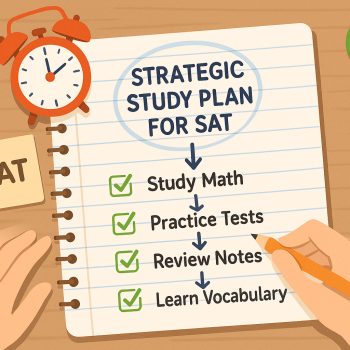Why this matters: SAT scores and your University of Tennessee application
If you or your student is aiming for the University of Tennessee — whether the flagship campus in Knoxville or one of the regional campuses — understanding SAT expectations is one of the clearest ways to boost confidence and make better strategic decisions during senior year. The SAT remains a key academic signal for many public universities: it’s a snapshot of problem solving, critical reading, and math skills under timed conditions. For admissions teams, it’s a standardized data point they can compare across high schools.
But numbers alone don’t tell the whole story. In this guide I’ll walk you through the SAT score ranges commonly seen at the University of Tennessee, how UT handles test scores today, what to aim for (realistic targets), how to time your testing, and concrete strategies to turn scores into a stronger application. I’ll also explain how personalized help — like Sparkl’s 1-on-1 tutoring, tailored study plans, expert tutors, and AI-driven insights — can be the difference between a “good” score and the score that actually opens doors.

What the University of Tennessee expects from SAT scores (overview)
Colleges publish ranges that reflect the middle 50% of admitted students’ scores. For the University of Tennessee, those published ranges give you a practical target: a lower bound to be comfortably competitive, and an upper bound that’s a stretch but achievable with focused work.
Important things to keep in mind:
- Published SAT ranges represent typical admitted students, not absolute cutoffs.
- Some campuses in the UT system may have different selectivity and score ranges.
- Test policies can change from year to year; always check your specific application cycle for the final word.
Typical SAT score ranges you should know
Across the University of Tennessee system, accepted students commonly fall within predictable SAT score bands. Below is a simplified table to give you a realistic snapshot. Consider this a planning tool, not a guarantee.
| Campus | Middle 50% SAT (Evidence-Based Reading & Writing + Math) | Admissions Selectivity |
|---|---|---|
| University of Tennessee, Knoxville (UTK) | Approximately 1210–1360 | Selective |
| University of Tennessee at Chattanooga (UTC) | Approximately 1020–1160 | Less selective |
| Other UT campuses (regional) | Ranges vary; often lower than UTK | Varies |
These are practical benchmarks. If your scores are above the upper bound, you’re in an especially competitive position academically. If you’re below the lower bound, targeted test prep can often close the gap — or you can strengthen other parts of your application to compensate.
Is the SAT required by the University of Tennessee?
Test policies have shifted a lot since the pandemic. Some institutions moved to test-optional and then later adjusted policies again. The University of Tennessee has historically accepted SAT scores and, depending on campus and the year, may require scores for certain programs or scholarships. The safest approach: when you apply, check that cycle’s application requirements for each campus and for merit scholarship eligibility.
Why this matters:
- Some scholarships and honors programs still use SAT scores for awarding merit aid.
- Test submission can strengthen applications when your score is above the typical middle 50%.
- If you choose not to submit scores, your application will be reviewed using other components (GPA, coursework rigor, essays, recommendations, extracurriculars).
How to choose the right SAT target for UT applicants
Targets are personal. Aiming for the median of the middle 50% is a pragmatic first step, but a more strategic target depends on your GPA, course rigor, extracurricular profile, and whether you’re applying for scholarships or competitive programs (engineering, business, nursing, etc.).
Smart target-setting — a three-tier approach
- Conservative target: Aim for the lower end of UTK’s middle 50% (about 1210). This helps make your application competitive in many cases.
- Competitive target: Aim for the midpoint (around 1280–1320). This strengthens your chances for admission and broadens scholarship eligibility.
- Aspiring target: Aim for the upper end or higher (1350+). This is a goal for selective majors and merit awards.
Example: If your GPA is very strong (3.8+ with rigorous AP/IB courses), a score near the conservative target may still be competitive. If your GPA is lower, a higher SAT score becomes more important to show academic readiness.
Practical timeline: When to take the Digital SAT for UT applicants
The Digital SAT format is now the norm, and planning test dates relative to application deadlines is crucial. Here’s a suggested timeline for juniors and seniors:
- Junior year spring: Take a diagnostic (PSAT or a Digital SAT practice test) to find strengths and weaknesses.
- Summer before senior year: Start a disciplined prep plan, focusing on weaknesses and time management.
- Senior year fall: Take your first official Digital SAT early enough to have time for a retake (if needed) before early-action deadlines.
- Senior year winter/spring: Use a retake to improve scores and submit final results for regular decision and scholarship consideration.
Remember that scholarship deadlines sometimes require earlier score submission than general admissions. Plan at least one retake opportunity if you hope to improve significantly.
Study strategies that actually work for the Digital SAT
The Digital SAT changed timing and question delivery, so prep needs to be intentional. Here are high-impact strategies that make the hours you invest pay off.
Focus areas
- Evidence-Based Reading & Writing: Practice active reading, summarize passages in one sentence, and drill main idea/author purpose questions.
- Math: Prioritize algebra, problem solving with ratios and proportions, and data interpretation. The digital format often makes scrubbing and marking answers faster — practice that flow.
- Timing and stamina: Full-length, timed digital practice tests are non-negotiable. Build mental stamina by simulating test-day conditions.
- Question strategy: Learn to triage — answer easy questions quickly, flag medium questions, and reserve time for the hardest ones.
Use real practice and targeted feedback
Free resources exist, but the most rapid improvements come from deliberate practice coupled with targeted feedback. That’s where personalized tutoring shines: a tutor who identifies your recurring errors, models efficient problem-solving steps, and customizes drills can accelerate your progress.
For example, students working 1-on-1 with Sparkl benefit from tailored study plans and AI-driven insights that track progress and adjust focus areas. That means fewer wasted hours and more practice that targets the exact question types holding you back.
Putting scores in context: Other parts of your UT application
Even at public flagships like UTK, admissions look at the whole student. Here’s how SAT scores interact with other application elements:
- GPA and course rigor: A strong transcript with AP/IB or honors courses can complement a solid SAT score and show readiness for college-level work.
- Essays: Your personal statement and supplemental essays are places to show voice, resilience, and intellectual curiosity.
- Extracurriculars and leadership: Depth of commitment and leadership roles help differentiate you, especially if test scores are average.
- Recommendation letters: These add color to your application and can reinforce academic strengths or character traits.
Scholarships and honors: Why SAT still matters
For many merit scholarships and selective programs within universities, SAT scores are a quick way to triage candidates — especially when GPA variability across high schools makes direct comparison tricky. If you’re chasing scholarship dollars at UT, submitting a higher SAT score can unlock opportunities that might not be available otherwise.
Realistic improvement plan: How many points can you gain?
Improvement depends on your starting point, how much time you commit, and how effectively you study. A focused 8–12 week plan with targeted practice can commonly yield 60–150 point gains for motivated students. Gains beyond that are possible but typically require long-term commitment or correction of deep conceptual gaps.
A sample 12-week roadmap
- Weeks 1–2: Diagnostic test, identify weak areas, build a personalized study plan.
- Weeks 3–6: Core content work (math fundamentals, reading strategies), weekly timed sections.
- Weeks 7–9: Mixed practice, error logs, and timed full sections; focus on pacing.
- Weeks 10–12: Full-length digital practice tests, final review of stubborn error types, test-day simulation.
One-on-one tutoring compresses this timeline because it targets the high-leverage areas from day one. Sparkl’s expert tutors, for instance, can design a study schedule around school commitments, provide immediate feedback, and use diagnostic data to adjust the plan continuously.
Test day tips for the Digital SAT
- Familiarize yourself with the test interface ahead of time — practice in the exact digital format if possible.
- Pack essentials the night before: approved device (if testing at home), snacks, ID, and any allowed materials.
- Sleep and nutrition: A rested brain and steady blood sugar make a bigger difference than last-minute cramming.
- Use the built-in tools efficiently (highlighting, flagging) and have a personal pacing plan (how many minutes per passage/section).
Case studies: How small improvements made big differences
Consider two hypothetical students applying to UTK:
- Student A: GPA 3.7, SAT 1180. With targeted prep, the student raises the score to 1290 and qualifies for several merit-based scholarships they might otherwise have missed.
- Student B: GPA 3.9, SAT 1220. They choose to submit scores and highlight strong extracurricular leadership and research experience; this combination helps them stand out for honors program admission.
Both examples show two paths: raising scores for scholarships, or submitting scores as part of a strong holistic application. The right path depends on your priorities and profile.
Preparing parents: How to support without micromanaging
Parents are critical allies in the college-going process. Offer support through structure, resources, and encouragement — without becoming the project manager. Practical ways to help:
- Set up a consistent study routine and quiet workspace.
- Help schedule practice tests and keep a calendar for test and application deadlines.
- Invest in targeted help if needed — a few months of focused 1-on-1 tutoring can be more effective than months of unfocused practice.
- Celebrate progress and normalize setbacks; test prep is a marathon, not a sprint.
How to decide whether to submit SAT scores to UT
Ask three questions:
- Does my score lie above or near the middle 50% range for the campus/program I’m applying to?
- Will submitting scores improve my eligibility for scholarships or honors programs?
- Do my other application components (GPA, essays, extracurriculars) strongly represent me without test scores?
If you answer “yes” to the first two questions, submitting scores is often beneficial. If the answer is “no,” focus energy on other strengths or consider a targeted retake.
Final checklist before you hit submit
- Confirm campus-specific requirements and scholarship deadlines.
- Verify that your best official SAT score is sent to the University of Tennessee campus you’re applying to.
- Make sure your transcript reflects senior-year course rigor and grades.
- Proofread essays and ensure recommendations are submitted on time.
How personalized help makes a measurable difference
Generic study plans yield generic results. Personalized tutoring zeroes in on your unique patterns: the kinds of reading questions you miss, the algebra topics that trip you up, or the pacing habits that cost you points. A structured tutor will give you strategies, accountability, and tailored drills — and modern services augment human coaching with data-driven insights.
For example, Sparkl’s personalized tutoring model offers 1-on-1 guidance, tailored study plans, expert tutors, and AI-driven insights that highlight where practice will produce the biggest score increases. That combination helps students improve faster and with less wasted time — a huge advantage when balancing school, extracurriculars, and college applications.
Parting advice: prioritize progress over perfection
Your SAT score is an important piece of the University of Tennessee application, but it’s not the entire story. Focus on steady, deliberate improvement. Use data from practice tests to guide your study. When it fits your budget and schedule, invest in targeted 1-on-1 help to accelerate gains and reduce stress. And above all, make sure the rest of your application tells your story clearly and confidently.
One last image to inspire

Applying to the University of Tennessee is a journey — and the SAT is one of the waypoints you can plan for and improve. With thoughtful targets, realistic timelines, and the right kind of support (focused tutoring, practice, and feedback), you can enter the process calm, prepared, and ready to show your best self. If you want a tailored study plan or coaching that adapts to your progress, consider exploring personalized options that offer 1-on-1 guidance and AI-backed insights. Good luck — you’ve got this.

















No Comments
Leave a comment Cancel